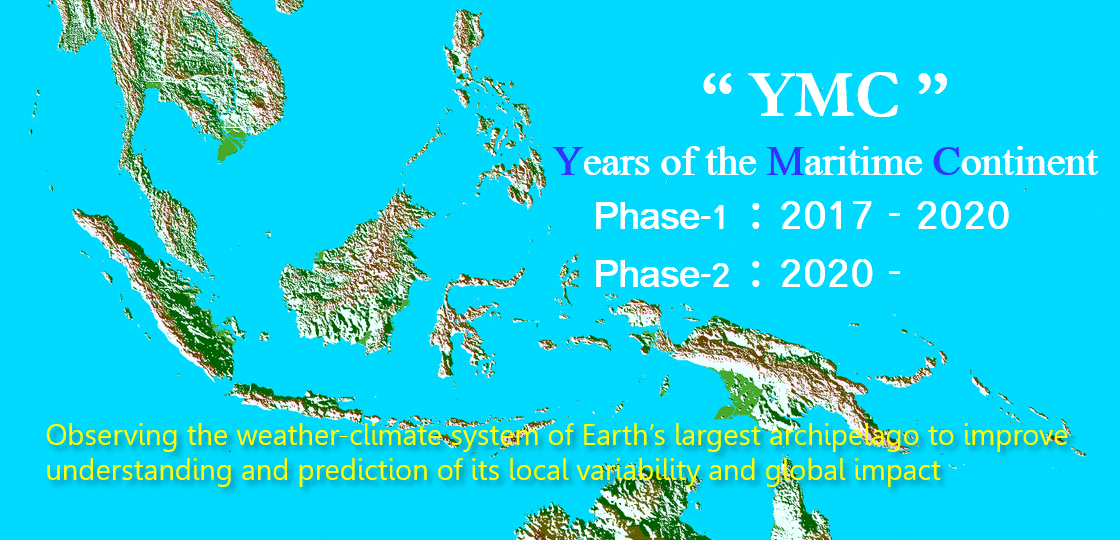YMC-BSM 2021 "Blog"
Tuesday, May 24, 2021
"Antenna installation before departure"
I've got on the R/V Mirai today. While the cruise is dedicated mainly to the maintenance of the mooring buoys and one super site, a member from DCOP will join the cruise to conduct special radiosonde observations until early July.
The special radiosonde observation directly measures ozone and water vapor in addition to wind velocity, temperature, relative humidity that can be obtained by standard radiosonde. In addition to these observations, we will also conduct "high-altitude" radiosonde observations using a 3,000g balloon to observe wind velocity and temperature from the ocean surface to an altitude of around 40km.
The purpose of this observation is to observe the material transport associated with the boreal summer monsoon and convective intraseasonal variability. The R/V Mirai will depart from Shimizu Port on May 26 and travel equatorward in the the western tropical Pacific. After that the R/V Mirai will cruise northwestward tendering the mooring buoys at several sites, then she is scheduled to occupy one site around 13.5N, 137E to conduct fixed-point observations for two weeks. The special radiosonde observation will be performed once a day during the cruise and every two days during the fixed-point observation period.
(SO, TK)
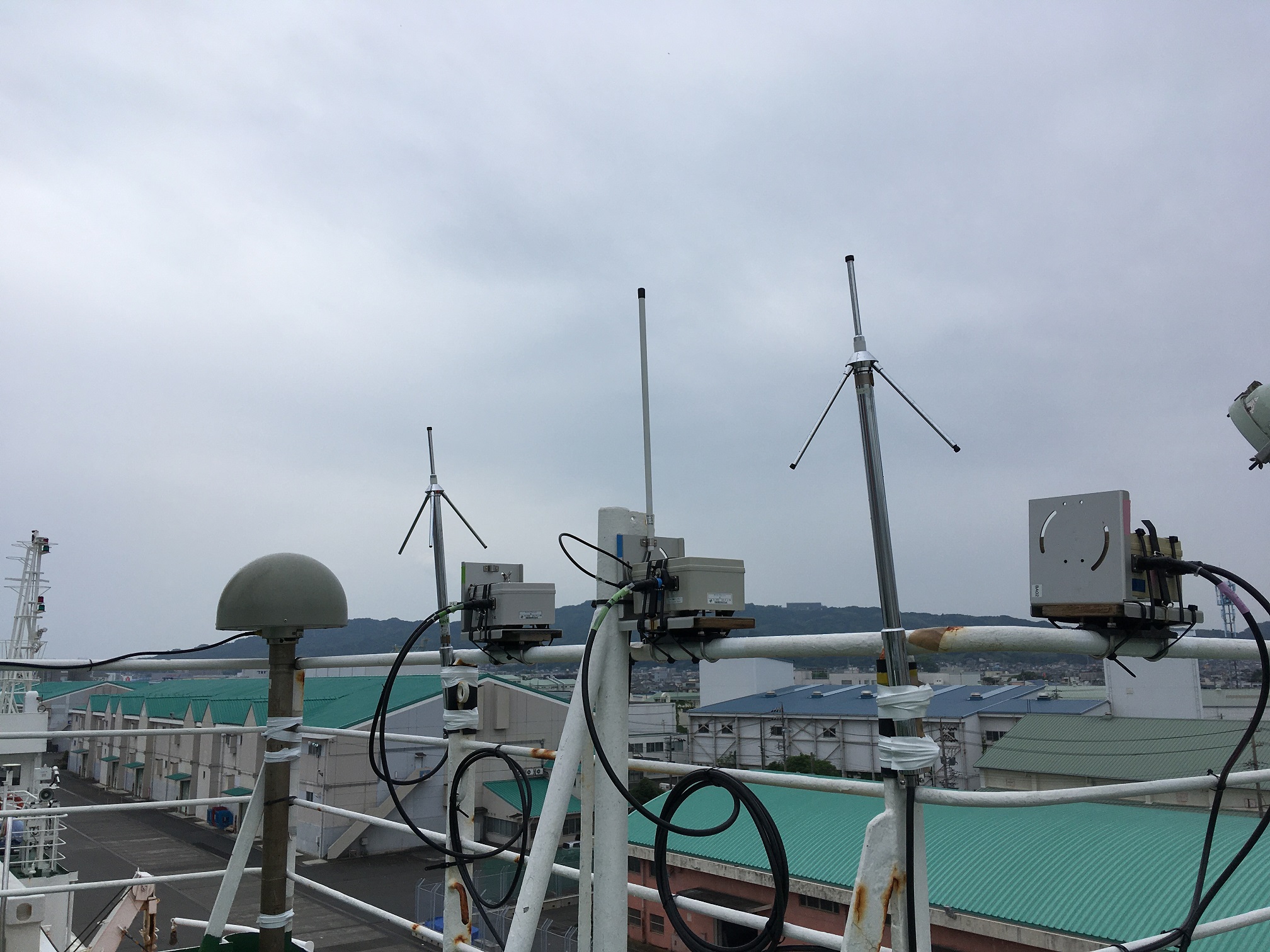
Today, I (SO) set up three antennas for the special radiosonde observations at the rooftop of the aft wheelhouse (next to the GPS dome antenna on the far left).
Wednesday, June 2, 2021
"Observing well"
Since May 27, we have been releasing the ozone sonde and water vapor sonde (SKYDEW) once a day.
So far, we have been able to acquire data beyond 30 km altitude in general smoothly.We have obtained meridional cross sections of ozone and water vapor from the ground to an altitude of about 30 km, and we are looking forward to analyzing them.
On the other hand, we are still in the process of trial and error for high-altitude radiosonde observations. (To be described in another article)
(SY, TK)
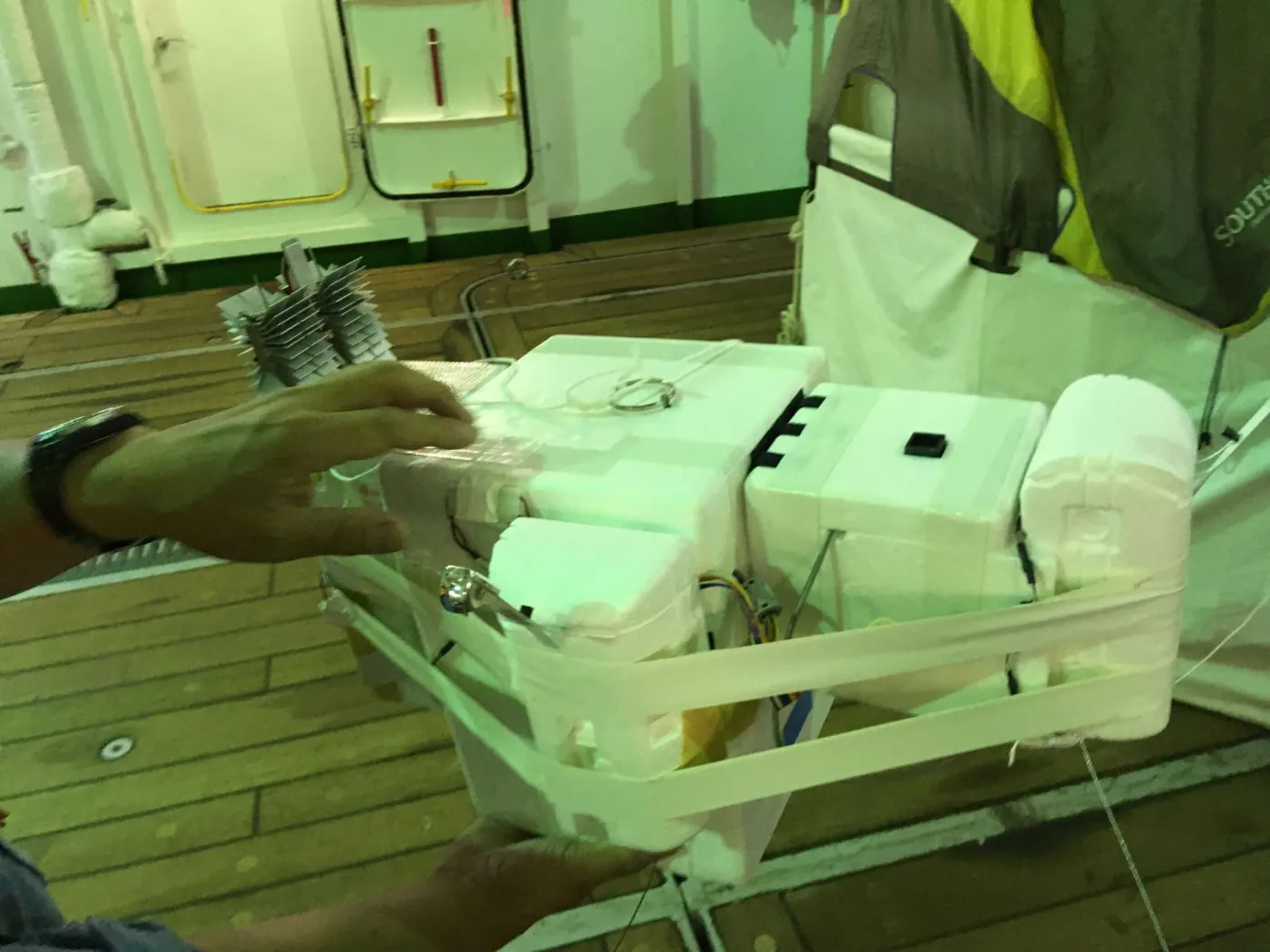
Thursday, June 3, 2021
"Trial and error in high-altitude radiosonde observation"
Since May 27, we have been conducting high-altitude radiosonde observations using a very large 3000g balloon (normally 350-600g) once a day.
The purpose of these observations is to observe from the ground to an altitude of around 40 km, and to investigate atmospheric disturbance activities that exist at altitudes above 30 km.
When measuring temperatures with the radiosonde, we have been launching at night because we need to correct for solar radiation during the daytime. However, many balloons burst at an altitude of around 20 km.
One possible cause is that the balloon cannot withstand the low temperature region at the tropopause.
Then, we launched it during the daytime when sunlight was available, and were able to observe up to 39.8 km. At present, we are planning to launch the balloon near sunset in the upper tropopause, and at night in the stratosphere. We will continue our observations through trial and error.
(SO, TK)
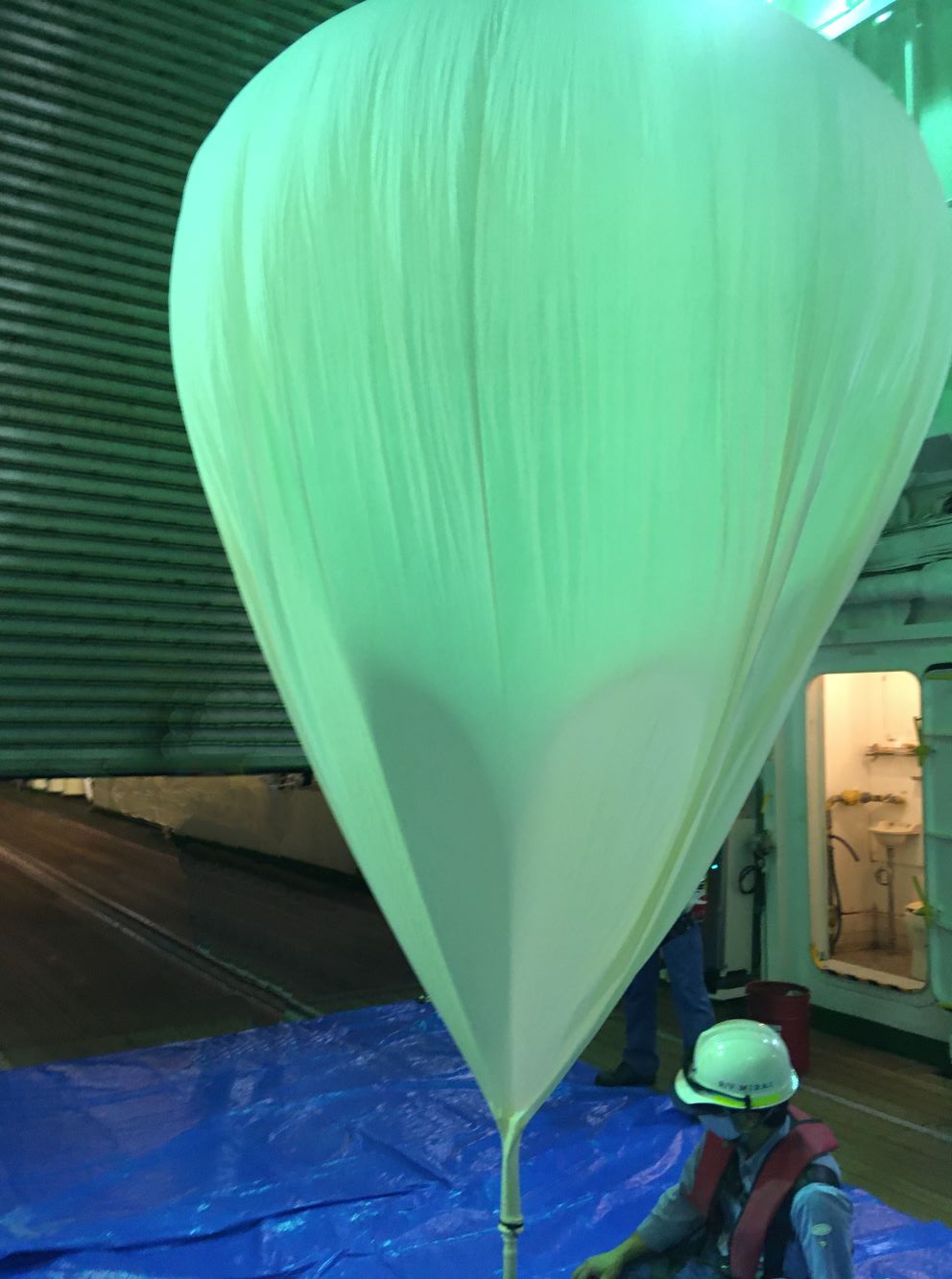
Sunday, June13, 2021
"High-altitude radiosonde observation going well"
The high-altitude radiosonde observations using a 3,000-gram balloon are conducted by releasing the balloon shortly before sunset. The balloon receives solar radiation in the troposphere and can pass through the low temperature of -80 degC or lower at the tropopause and reaches the stratosphere.
In the stratosphere after sunset, the balloon measures the temperature without being affected by solar radiation and steadily reaches an altitude of 40 km. Currently, we are improving the system by devising a way to obtain more stable data.
(SO, TK, RS)

Monday, June 28, 2021
"Observation on a fixed point"
We are getting close to the end of our fixed-point observations that began on June 16.
At the fixed point, we have been releasing a balloon once every two days with an ozone sonde, a water vapor sonde, sometimes a cloud particle sonde, and several radiosondes attached (all on board). The photo shows an ozone sonde with a water vapor sonde and a cloud particle sonde mounted in the center, and two radiosondes suspended from a plastic plate on top of it.
(SO, TK)
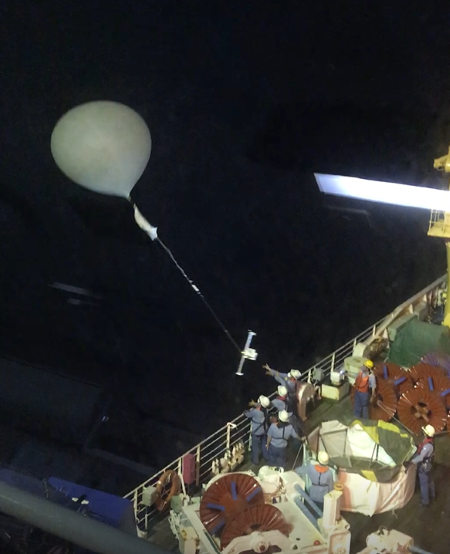
Return to [ YMC-BSM 2021 ] page
